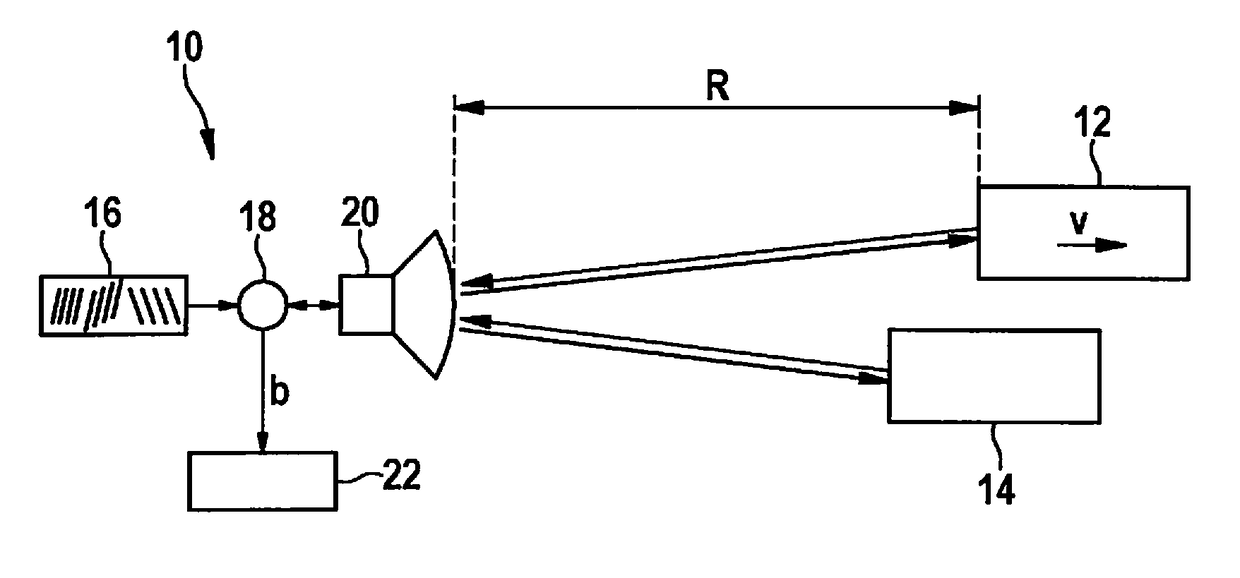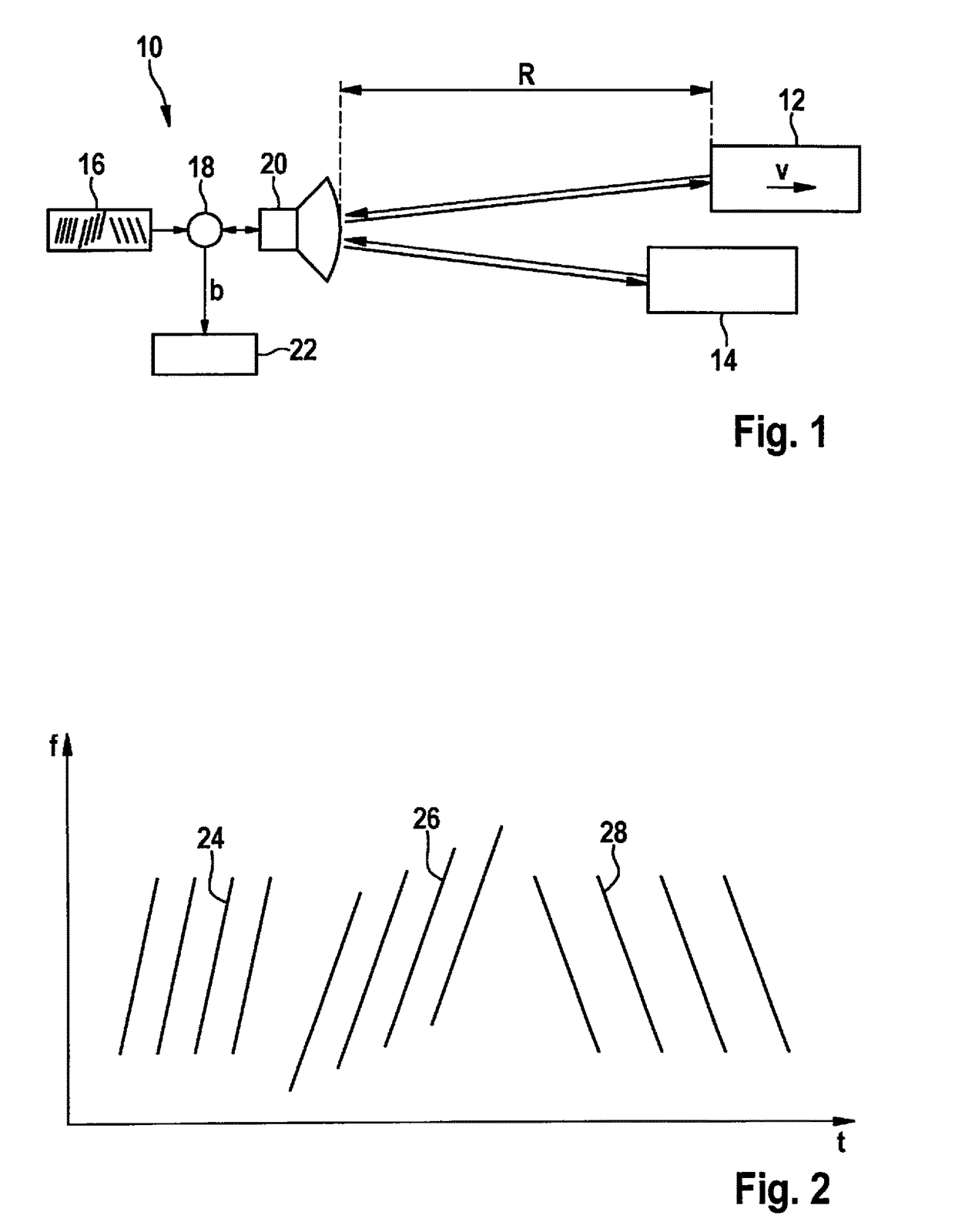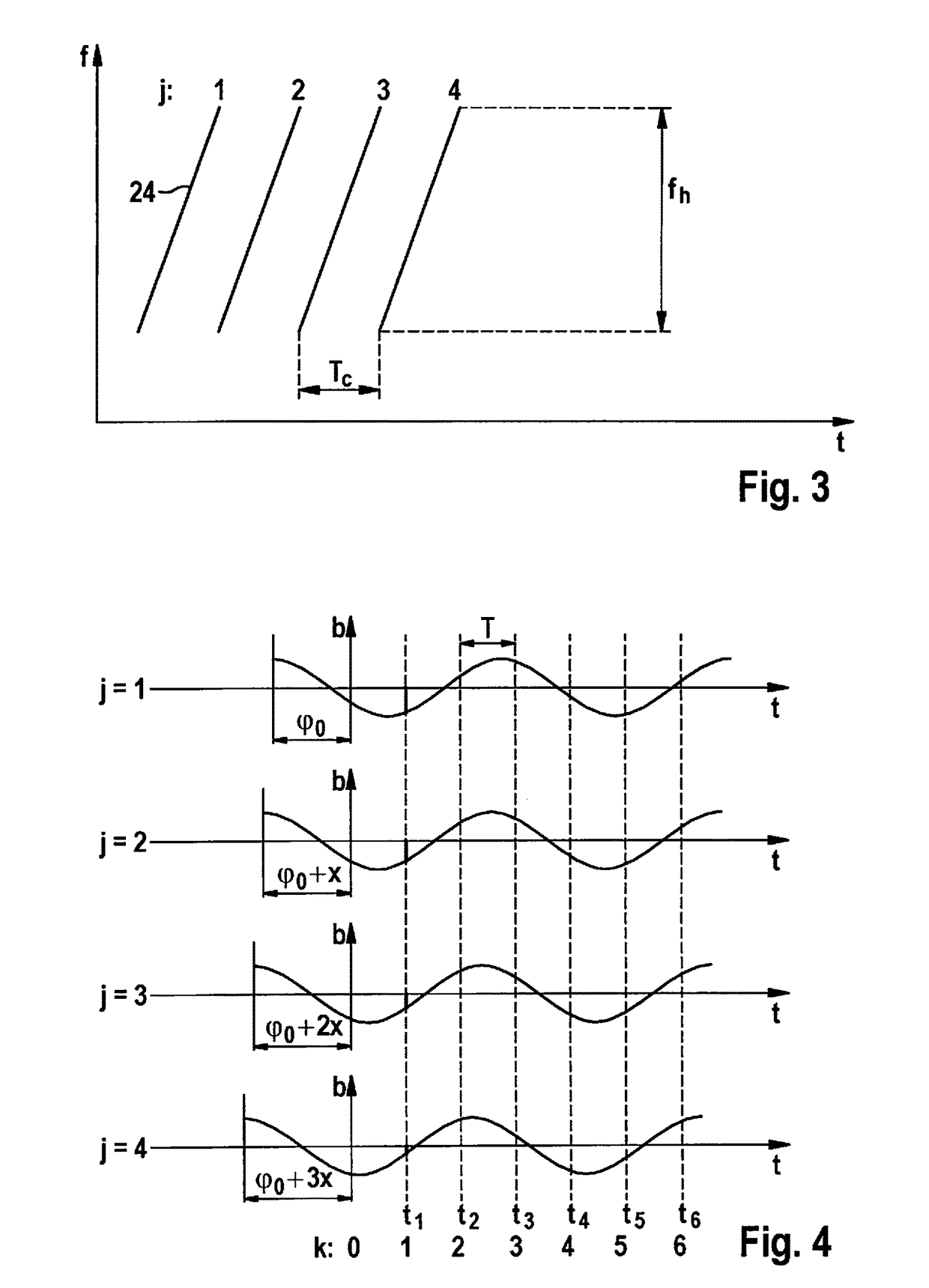Method for locating an object using an fmcw radar
a technology of locating objects and radars, applied in the direction of reradiation, measurement devices, instruments, etc., can solve the problems of significant cost saving, and achieve the effect of suppressing the disturbing influence of noise and clutter
- Summary
- Abstract
- Description
- Claims
- Application Information
AI Technical Summary
Benefits of technology
Problems solved by technology
Method used
Image
Examples
Embodiment Construction
[0040]FIG. 1 shows, as a simplified block diagram, an FMCW radar sensor 10 that is for example installed at the front in a motor vehicle, and is used to measure distances R and relative velocities v of objects 12, 14, for example vehicles traveling in front. Radar sensor 10 has a voltage-controlled oscillator 16 that, via a mixer 18, supplies a frequency-modulated transmit signal to a transceiver device 20, by which the signal is sent out in the direction towards objects 12, 14. The signal reflected by the objects is received by transceiver device 20 and is mixed with a portion of the transmit signal in mixer 18. In this way, a baseband signal b is obtained that is further evaluated in an electronic evaluation and control device 22.
[0041]FIG. 2 shows an example of a modulation schema of the transmit signal provided by oscillator 16. Frequency f of the transmit signal is here plotted as a function of time t. The frequency is modulated in the form of successive ramps 24, 26, 28. In th...
PUM
 Login to View More
Login to View More Abstract
Description
Claims
Application Information
 Login to View More
Login to View More - R&D
- Intellectual Property
- Life Sciences
- Materials
- Tech Scout
- Unparalleled Data Quality
- Higher Quality Content
- 60% Fewer Hallucinations
Browse by: Latest US Patents, China's latest patents, Technical Efficacy Thesaurus, Application Domain, Technology Topic, Popular Technical Reports.
© 2025 PatSnap. All rights reserved.Legal|Privacy policy|Modern Slavery Act Transparency Statement|Sitemap|About US| Contact US: help@patsnap.com



